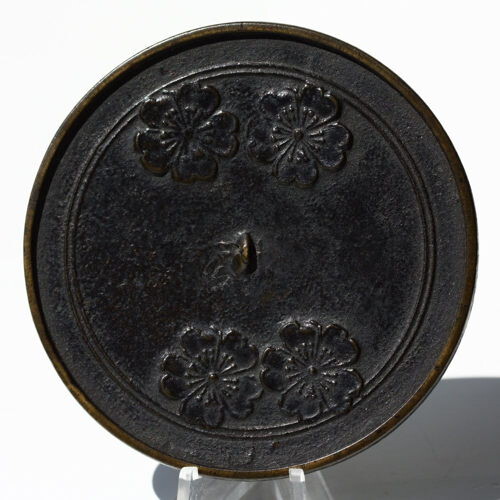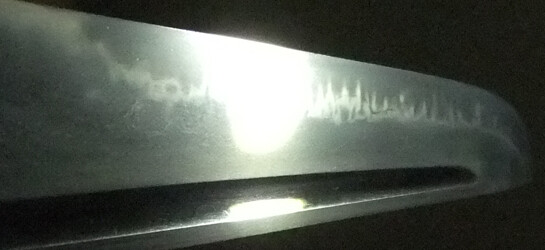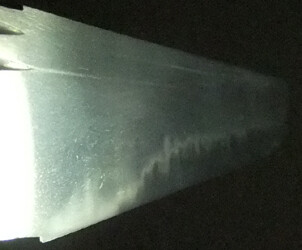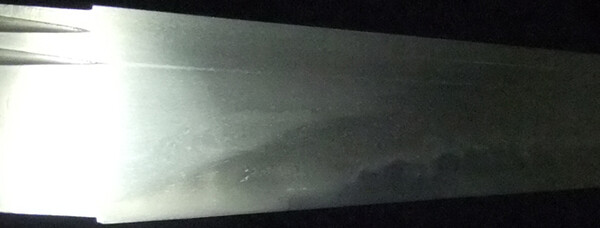-
Posts
3,157 -
Joined
-
Last visited
-
Days Won
26
Content Type
Profiles
Forums
Events
Store
Downloads
Gallery
Everything posted by Marius
-
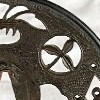
Pp New Pay To Friends Requirement
Marius replied to Stephen's topic in Auctions and Online Sales or Sellers
Not a mess. They are shameless crooks abusing their position. Their exchange rates are robbery. -

Pp New Pay To Friends Requirement
Marius replied to Stephen's topic in Auctions and Online Sales or Sellers
Yes Barry, you can -

Pp New Pay To Friends Requirement
Marius replied to Stephen's topic in Auctions and Online Sales or Sellers
Curran, The Japanese banking system is outdated. But I guess if you get the correct branch cod, account type (futsuu etc) and account number, all should go well. I have done several transfers to Japan, never a problem. It is also important to provide the recipients name in kana. -
Pictures are by Kojima san. I have no idea how he manages to capture such detail using his prehistoric camera (a simple low resolution camera, nothing professional, mind you).
-

Pp New Pay To Friends Requirement
Marius replied to Stephen's topic in Auctions and Online Sales or Sellers
I use them a lot, excellent. I avoid PayPal, I use it only to pay for eBay purchases (small fry). -
BTW, as this is unsold, let's move it to the trash bin or to a section, wherever it seems more appropriate Thanks Brian
-
Trust me, it is not "a little" blade
-
Hi Rohan, it has a standalone habaki.
-
Well, I think this is is utterly unnecessary, but I wanted to express my thanks to Jussi Ekholm here. Got his sword today, carefully packed and looking better than in the pictures. So if you buy something from Jussi, you are guaranteed to be very happy. Thanks Jussi!
-
Forgot to add - this comes in shirasaya with Kojima san’s sayagaki. I never had the oshigata.
-
Here is another tanto by Hiroshi Kojima the 4th Noaohiro of the Taikei Naotane lineage. This tanto is another one which shows the results of reshaping and repolishing a blade. Let me assure you that the results are nothing less than stunning. This is a beautiful tanto in superb polish with tons of activities, and a beautiful utsuri. I can assure you that despite the reshaping this is a solid blade (not as solid as the other one I have offered a few days ago). It reminds me of the best tanto of the Kamakura period. If interested, ask me for dimensions, but nagasa should be about 22-23cm, kasane at least 5mm, maybe 6mm. Explanation: by "grinding" Kojima san means shaping with polishing stones. Kojima san has polished this tanto himself - he is a very competent polisher who does excellent sashikomi and dislikes strong hadori. This tanto is in sashikomi Again, allow me to refer yo to Kojima san's website where he describes the story of this blade: http://www.ksky.ne.jp/~sumie99/K-un2.html This excellent blade is yours for: Withdrawn Payment schedule is possible, and as always this item comes with a simple return policy: if after a 3 days inspection period you decide that you do don't like it, you can return it for a full refund minus shipping cost, no questions asked. If unsold, I leave it to Brian to delete this thread or move it to the Nihonto discussion as he has done with the previous one: http://www.militaria.co.za/nmb/topic/27615-naohiro-4th-hiroshi-kojima-experimental-massive-tanto/
-
"Grinding" is Kojima's way to say "polishing away steel". I have seen him shaping his swords - he is working with the tools of a classic polisher and of course with loads of water.
-
I tend to be mercurial, sorry, so... the tanto is no longer avaiable. Brian, can I kindly ask you to move this topic to whatever section you deem appropriate or just to delete it? Thank you
-
Allow me a few words about the maker of this tanto, Hiroshi Kojima, the 4th Naohiro... I have known Kojima san for years and I regard him as one of the most open and helpful Japanese sword smiths. His only wish is to make swords and spread sword knowledge. He shares his sword knowledge willingly and teaches to focus on steel and its particles. He does not care about recognition, he plays down his own knowledge and his sword making skills in a way that reminds me of the best English traditions (those who know true Englishmen will know what I mean). He is not a Mukansa and will probably never be one - he simply does not care about it. He loves his work and that is sufficient for him. Kojima san is always keen to experiment - two years ago I have studies a sword by him that was folded only three times and quenched/tempered without clay (it came out with an amazaing saka-choji hamon). This tanto in its current shape is also the result of an experiment. Kojima san appreciates simple, functional swords, even if they are no masterworks. His own swords are functional, too. He does not try to emulate any particular style, but his daito are usually tachi with a rather tight steel full of ji-nie, a flamboyant choji hamon and utsuri. If he makes a sword in the style of early koto, his steel is not so tight anymore. He is the last sword smith of the Naotane lineage - I cannot imagine any candidate who would have the talent, patience and humility to go through a full apprenticeship at Naohiro's. I own a few swords made by Naohiro, including this interesting tanto. I have bought it to study the effect of polishing on steel activities, but also to analyse natural choji in comparison to designed choji (in this case I used a gorgeous Chounsai Tsunatoshi tanto as a benchmark for designed choji). Now it is is time to part with it. Being lazy as I am, instead of taking pics and writing a description I am referring you to a webpage on which this tanto and its origin is described. It is a fascinating story. Before you jump to the page, please let me tell you a few words about this tanto. 1. It is what people tend to call a "cleaver". It is absolutely massive in hand, very broad (motohaba of 3cm, that's 1.18') and still thick. 2. It is in beautiful, classical polish which does shows the steel and hamon very clearly (on one side the choji remind me of Ichimonji). There is utsuri, as in most swords by Kojima san. 3. It is unusual and ideal for serious study. It is with a friend now, who is studying it. 3. It comes signed and with a sayagaki by Kojima-san, which describes its history in somewhat poetic words, AFAIR. So, here is the link: http://www.ksky.ne.jp/~sumie99/effectofyakiire.html This tanto is yours for withdrawn (includes shipping to EU and US, but charges are extra, payment schedule possible). Return policy: 7 days inspection period and if after that you don't like it, just return it for a full refund, minus shipping costs (a purchase with a payment schedule is excluded from this guarantee, but we can work something out also in such a case). If it remains unsold for a couple of days, I will ask Brian to move this thread to the nihonto discussion section, if he deems it educational enough. So posting it makes sense in any case.
- 14 replies
-
- 10
-

-
Sylvain is from France, Emma. Look under his avatar
-
Patrick, remember, I am a nincompoop But whatever the opinion, you have a cool tsuba that you can enjoy, and that is what it is all about Of course, attributing is fun, but let us not become obsessed with it.
-
Do not count my "voice" as ko-Shoami - I simply do not know. We are not shinsa, we do not have to come up with more or less irrelevant attributions, we have the luxury of saying "no idea". Please just enjoy your tsuba.
-
Gentlemen, Kanayama is just an appellation. There are no sources, no documents regarding this "school", which is nothing more than a group tsuba sharing some common characteristics (thickness, compactness, pronounced tekkotsu, representing "tea aesthetics", if you will). You can call this what you want (I'd call it a very nice sukashi tsuba), but it does not seem to belong to that group and it does not match Kanayama as described by Sasano, Torigoye or Okamoto. When in doubt, go for (ko)Shoami
-
That looks like a ko-kinko kozuka to me - the motif, the nanako, the wear...
-
Of course I don't AFAIR they show some activities in the steel. Regrettably, I don't have these photos any more.
-
FYI: I used to own this one. Pictures do not do it justice. This is a very nice tanto, so if you want an utsushi of a Kamakura tanto, the quality is very good and the price attractive.
-

Ko Uda Spectacular Example
Marius replied to Vermithrax16's topic in Auctions and Online Sales or Sellers
@Surfson Yes, part of it must be some kind of modern swashbuckling I agree that a longer sword is harder to make, but do 6-8 cm make a big difference? Besides, with osuriage swords, we can only estimate the original length of a shortened blade, so if we hold a 62 cm daito that we guess was originally 70 or 78 cm long, the effort and craftsmanship that went into this blade remains unchanged, we just can't see the part of the blade that has been cut off. Also, what do we make of tanto masterpieces? Are they somehow inferior to a daito? There were some makers who made no daito, or no daito made by them has been preserved. Will we dismiss an Awataguchi Yoshimitsu because his blades don't have a 70cm nagasa? -

Ko Uda Spectacular Example
Marius replied to Vermithrax16's topic in Auctions and Online Sales or Sellers
@Gakusee Excellent remark, Michael. Our fixation on length never ceases to puzzle. Is that perhaps some kind of a "I have a longer... sword" boasting? Given that also wakizashi-length swords were highy valued and given as rewards by warlords to their best generals (AFAIR Takeda Shingen has at some point given an masterpiece wakizashi to Baba Nobuharu) our insistence on long blades seems outright funny. Of course, we have to take into account preferences prevalent in the market. Ubu is of course always desirable as the original shape is preserved, but length? Is my 59 cm ubu Fujishima uchigatana somehow inferior to a a 68cm ubu daito of the same school? I do not think so, do you? And why should be an osuriage daito with a 62 cm nagasa be inferior to a 70cm nagasa daito? OK, if we have a 110 cm "monster" then the value lies also in the rarity of such an item, but for a "standard" katana length of an osuriage daito, do 6 or 8 cm make such a difference? -

Ko Uda Spectacular Example
Marius replied to Vermithrax16's topic in Auctions and Online Sales or Sellers
@Jacques, Oh, my apologies. I stand corrected. -

Ko Uda Spectacular Example
Marius replied to Vermithrax16's topic in Auctions and Online Sales or Sellers
Jacques, as wiritten - I try not to confuse chikei with layers of mixed steel. But whether this sword has "real" chikei or not is really impossible to say just by looking at photographs. Also, I suspect that we get hung up on all those chikei, inazuma, kinsuji, sunagashi and what have you, because using these terms is fun and makes us look more like experts.

